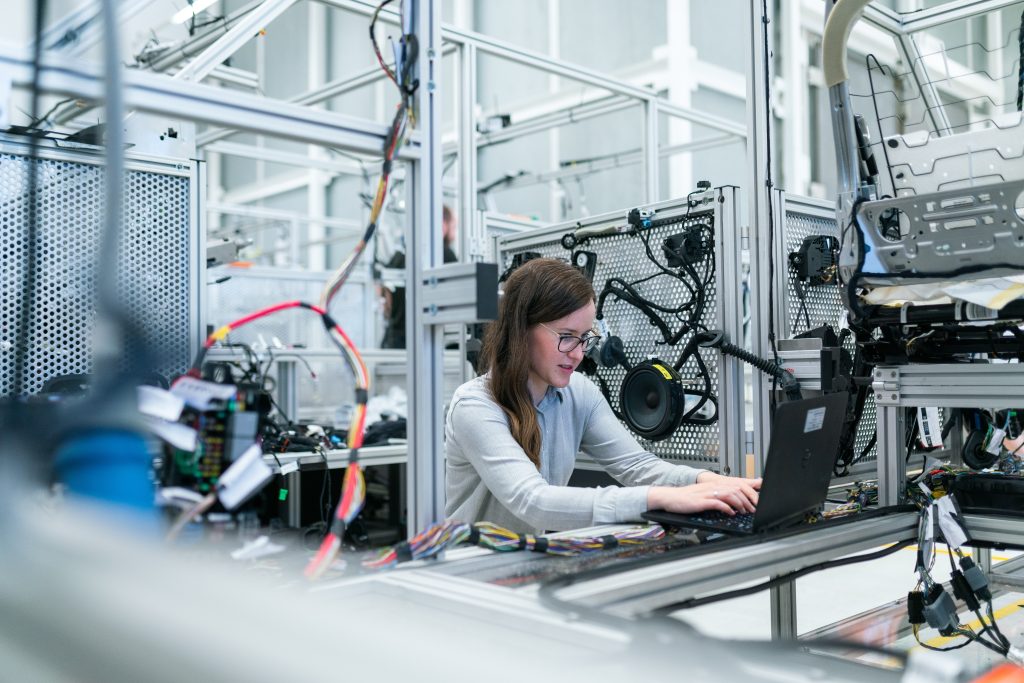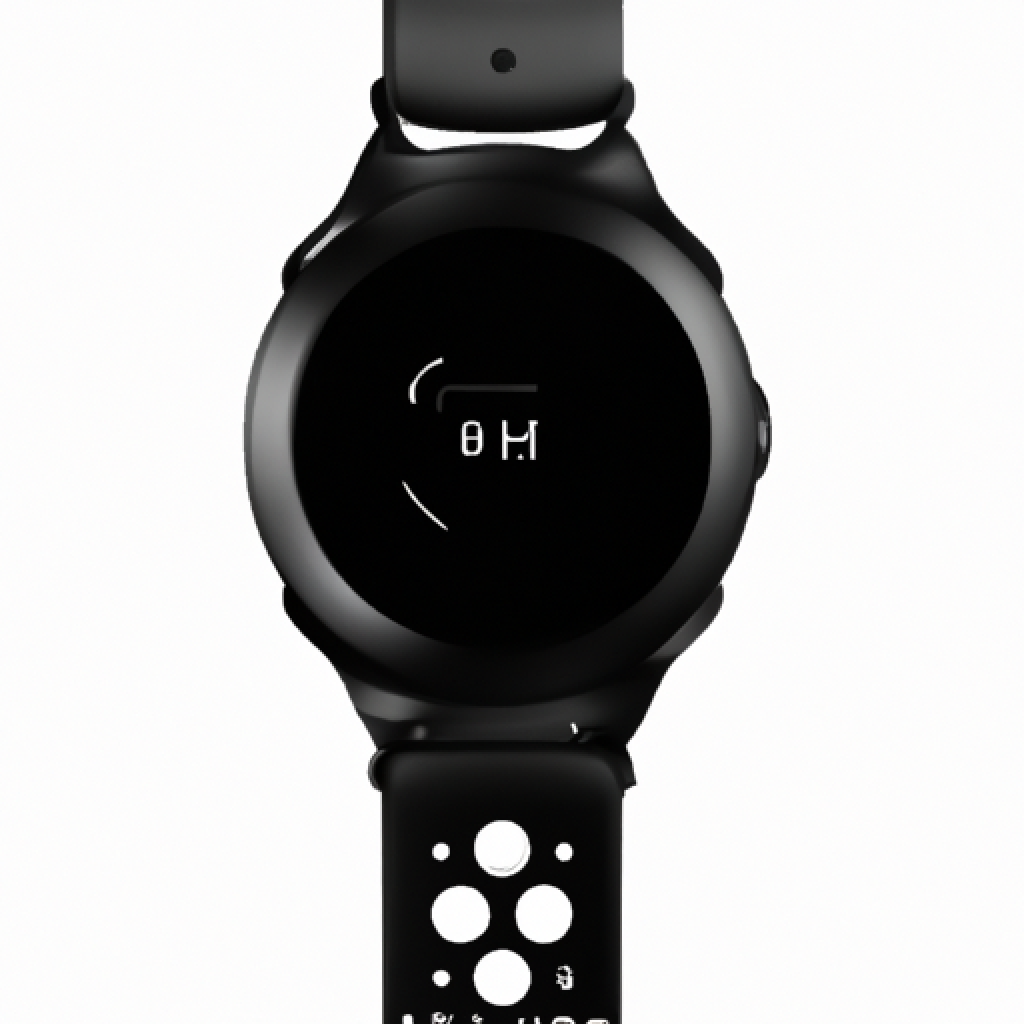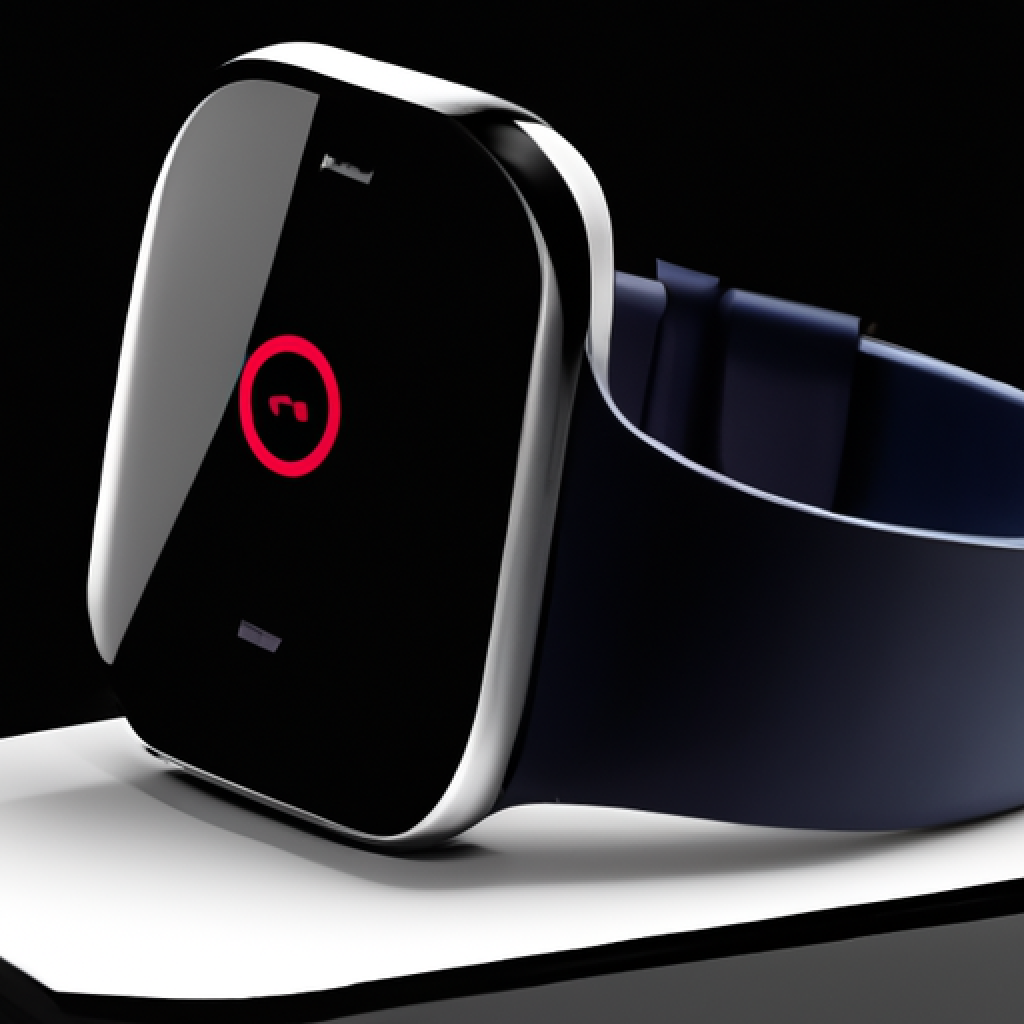What Is The New Wearable Technology In 2023?

In 2023, wearable technology is taking the world by storm with its revolutionary advancements. From smartwatches that can detect health conditions to augmented reality glasses that redefine the way we interact with the world, the possibilities seem endless. This article will explore the latest wearable technology trends of 2023, revealing how these innovative devices are shaping our lives and steering us towards a more connected future. Let’s dive in and discover what the future holds for wearable tech!
Understanding Wearable Technology
Definition of wearable technology
Wearable technology, also known as wearables, refers to electronic devices that can be worn on the body, typically in the form of accessories or garments. These devices are equipped with sensors, processors, and communication capabilities to collect, process, and transmit data.
Historical evolution of wearable tech
The concept of wearable technology traces back to the 1960s, when the first portable computer, the IBM 5100, was introduced. However, wearable technology gained significant attention in the late 20th century with the development of devices like digital watches and portable music players. The emergence of smartphones and the miniaturization of electronic components spurred the evolution of wearables, leading to the development of fitness trackers, smartwatches, and VR headsets.
Differentiating between conventional tech and wearable tech
Conventional technology typically refers to devices that are not worn on the body but rather utilized as external tools. Examples include smartphones, laptops, and televisions. Wearable technology, on the other hand, integrates seamlessly into the user’s attire or accessories, providing hands-free functionality and constant connectivity. Wearables offer a more immersive and personalized experience, with the ability to collect and analyze real-time data from the user.
Latest Trends in Wearable Technology 2023
Technological improvements in 2023
In 2023, wearable technology is expected to undergo significant technological advancements. These improvements include enhanced battery life, faster processing speeds, improved connectivity options such as 5G, and more accurate sensors. Additionally, there will be a focus on miniaturization, making wearables sleeker and more comfortable to wear.
Increased user adoption and demand
As wearable technology continues to evolve, the adoption rate among users is projected to soar. This is due to the increasing awareness of the benefits provided by wearables, such as health monitoring, convenience, and enhanced productivity. With their seamless integration into daily routines, wearables are becoming indispensable tools for individuals across various demographics.
Surging interest from various industries
The potential applications of wearable technology extend beyond the individual user. Industries such as healthcare, sports, entertainment, and fashion are recognizing the value that wearables can bring to their respective fields. From monitoring patients’ vital signs to tracking athletes’ performance, and even enhancing fashion items with technological features, wearables are revolutionizing multiple industries.

Health and Fitness Wearables
New features in health monitoring
Health and fitness wearables have experienced significant advancements in recent years and are expected to continue evolving in 2023. These wearables now feature advanced sensors, such as heart rate monitors, sleep trackers, and blood oxygen level sensors. Furthermore, wearables are being developed to monitor potential health risks, enable remote consultations with healthcare professionals, and provide personalized health recommendations.
Introduction of AI in fitness trackers
Artificial Intelligence (AI) is playing a crucial role in improving the capabilities of fitness trackers. With AI algorithms, wearables can analyze data collected from multiple sensors to provide users with personalized insights and recommendations. AI-powered fitness trackers can track and analyze exercise performance, suggest personalized workout routines, and even offer real-time feedback on form and technique.
Use case studies of health and fitness wearables
One prominent example of health and fitness wearables is the smartwatch. Companies like Apple, Samsung, and Fitbit have introduced smartwatches with features such as heart rate monitoring, activity tracking, and sleep analysis. These wearables have become popular tools for individuals to track their health and wellness goals. Additionally, fitness bands, like Garmin and Xiaomi, provide users with comprehensive activity tracking and advanced performance metrics.
Smartwatches and Their Evolution
Emerging features of smartwatches in 2023
Smartwatches have evolved beyond their initial role as a mere extension of smartphones. In 2023, smartwatches are expected to have advanced features such as blood pressure monitoring, blood glucose monitoring, and ECG measurements. They will also incorporate voice assistants, allowing users to control their smart home devices, make phone calls, and send messages directly from their wrist.
Comparative analysis with earlier versions of smartwatches
The evolution of smartwatches from earlier versions showcases significant improvements in terms of design, functionality, and user experience. Early smartwatches were predominantly used for notification alerts and basic fitness tracking. However, the latest iterations boast larger and more vibrant displays, longer battery life, enhanced water resistance, and improved health monitoring capabilities.
Popularity and market growth of smartwatches
Smartwatches have gained immense popularity and witnessed substantial market growth in recent years. According to research, the global smartwatch market is projected to reach a value of $134.5 billion by 2026. This growth can be attributed to the increasing number of tech-savvy consumers, the proliferation of health and fitness awareness, and the continuous advancement of smartwatch technology.

VR and AR Enabled Wearables
Deciphering AR (Augmented Reality) and VR (Virtual Reality)
AR and VR are immersive technologies that provide users with digitally enhanced experiences. Augmented Reality (AR) overlays digital content onto the real world, enhancing the user’s perception of reality. Virtual Reality (VR), on the other hand, creates a simulated environment, immersing the user in a virtual world.
Latest AR and VR wearable launches
In 2023, AR and VR wearables are expected to see significant advancements and increased popularity. Companies like Oculus, Microsoft, and HTC are continuously improving their VR headsets, offering higher resolution displays, improved tracking, and more realistic experiences. Additionally, AR glasses, such as Google Glass and Microsoft HoloLens, are becoming more accessible, providing users with augmented information and interactive experiences.
The impact of AR and VR wearables on the entertainment and gaming industries
AR and VR wearables have the potential to revolutionize the entertainment and gaming industries. With immersive experiences, users can step into virtual worlds, interact with virtual objects, and even participate in multiplayer games. Additionally, AR wearables offer new possibilities for live events, allowing users to experience a combination of virtual and real-time environments. These technologies have the power to reshape the way we consume entertainment and engage with digital content.
Wearable Technology in the Fashion Industry
Integration of technology in apparels
The fusion of technology and fashion has given rise to a new era in the fashion industry. Wearable technology is being seamlessly integrated into clothing items, including jackets, shoes, and even underwear. Smart fabrics and textiles embedded with sensors and conductive fibers enable apparel to track body temperature, monitor posture, and provide haptic feedback.
Smart jewelry and accessories
Wearable technology has moved beyond clothing and into the realm of jewelry and accessories. Smartwatches, smart rings, and smart bracelets have become fashionable accessories that combine style and functionality. These wearables can monitor health metrics, display notifications, and even make payments, all while complementing the wearer’s personal style.
The fusion of Fashion and Tech – a new era in the fashion industry
The fusion of fashion and technology is reshaping the fashion industry, giving rise to innovative designs and experiences. Fashion shows now incorporate wearable technology, showcasing garments that change color, emit light, or display digital content. The integration of technology in fashion not only adds functionality but also opens new creative possibilities for designers to express their vision.

Bio-Sensing Wearables
Explanation of bio-sensing technology
Bio-sensing wearables utilize sensors to collect and interpret biological data from the human body. These wearables can monitor vital signs, such as heart rate, blood pressure, and body temperature, providing users with real-time health insights. Bio-sensing wearables are primarily used in healthcare settings, aiding in the diagnosis, treatment, and management of various medical conditions.
Benefits of bio-sensing wearables
Bio-sensing wearables offer numerous benefits to individuals and healthcare professionals alike. These wearables allow for continuous monitoring of health parameters, enabling early detection of abnormalities and proactive management of conditions. They also promote patient engagement and empowerment, providing individuals with the information they need to make informed decisions about their health.
Market reception and possible future of bio-sensing wearables
Bio-sensing wearables have received positive reception in the market, especially in the healthcare sector. With advancements in sensor technology and data analytics, the future of bio-sensing wearables looks promising. These wearables have the potential to transform healthcare delivery by facilitating remote patient monitoring, reducing hospital readmissions, and enabling personalized medicine approaches.
Challenges and Limitations of Wearable Tech
Data privacy and security issues
One of the key challenges facing wearable technology is the protection of user data. Wearables collect sensitive information, including personal health data and location data, which raises concerns about privacy and security. Wearable manufacturers must prioritize data encryption, robust user authentication mechanisms, and transparent data handling practices to address these concerns.
Consumer concerns about health effects
Another challenge with wearable technology is the potential health effects associated with prolonged and continuous usage. Some individuals are concerned about radiation exposure from wearables, the impact of electromagnetic fields, and the potential development of musculoskeletal issues caused by prolonged usage. Further research and guidelines are needed to ensure the safe and responsible use of wearable technology.
Technological and design hurdles
Wearable technology faces technological and design limitations that hinder its widespread adoption. Limited battery life, cumbersome user interfaces, and device fragility are significant barriers that need to be overcome. Advancements in energy-efficient components, intuitive user interfaces, and durable materials will play a crucial role in addressing these challenges.

Future Predictions for Wearable Technology
Role of AI and machine learning
Artificial Intelligence (AI) and machine learning are expected to play an increasingly significant role in the future of wearable technology. These technologies will enable wearables to learn and adapt to users’ preferences, provide personalized recommendations, and even anticipate users’ needs. AI algorithms can analyze vast amounts of data collected by wearables, unlocking valuable insights and improving the overall user experience.
Possible tech enhancements
Future advancements in wearable technology may include improved battery technologies, flexible and stretchable displays, and even self-healing materials. The integration of biometric authentication systems and advanced gesture control mechanisms may further enhance the user experience. Additionally, the continuous miniaturization of components will enable the development of even smaller and more discreet wearable devices.
Prospects for wearable technology in different industries
Wearable technology holds immense potential across various industries. In healthcare, wearables can revolutionize patient monitoring, help manage chronic diseases, and enhance telemedicine capabilities. In the workplace, wearables can improve safety, productivity, and employee well-being. Furthermore, industries like sports, gaming, and fashion will continue to embrace wearables, harnessing their capabilities to enhance performance, engagement, and personal expression.
Impact of Wearable Technology on Society
Wearable tech’s role in promoting healthy lifestyles
Wearable technology has the power to promote healthy lifestyles by providing users with real-time data and personalized insights. Fitness trackers and smartwatches encourage individuals to set and achieve health goals, track their physical activity, monitor sleep patterns, and even manage stress levels. By fostering awareness and providing actionable information, wearables empower individuals to make informed decisions about their well-being.
Boosting productivity and efficiency
Wearable technology can significantly boost productivity and efficiency in various industries. In sectors like manufacturing, logistics, and healthcare, wearables enable hands-free access to information, remote communication, and real-time data analysis. This enhances the speed and accuracy of tasks, reduces errors, and streamlines workflows. Wearables also enable employees to multitask effectively, improving overall efficiency.
Creating new ways for social interaction and communication
Wearable technology has the potential to create new ways for social interaction and communication. AR-enabled wearables can overlay digital content onto the physical environment, enabling users to share experiences, collaborate, and communicate with others in immersive ways. Additionally, wearable devices with built-in communication features, such as smartwatches, facilitate seamless and convenient communication, enabling users to stay connected without the need for a smartphone.
In conclusion, wearable technology has come a long way since its inception, and the latest trends in 2023 indicate that it will continue to evolve and impact various industries. From advancements in health monitoring to the integration of technology in fashion and the emergence of AR and VR wearables, the possibilities are endless. While wearable technology faces challenges and limitations, such as data privacy concerns and health effects, the future is promising. With the role of AI and machine learning, tech enhancements, and its impact on society, wearable technology is poised to shape a more connected and intelligent future.








